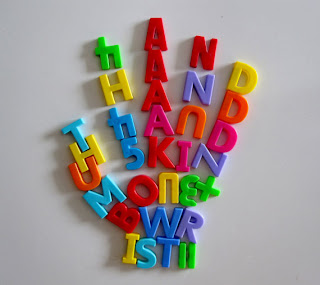"The narrative fallacy addresses our limited ability to look at sequences of facts without weaving an explanation into them, or, equivalently, forcing a logical link, an arrow of relationship upon them. Explanations bind facts together. They make them all the more easily remembered; they help them make more sense. Where this propensity can go wrong is when it increases our impression of understanding." -Nassim Nicholas Taleb (2008)
One of the first posts on this blog addressed itself to this problem of narrative (though I was unaware of Taleb’s work at the time). I have since returned to similar territory on a number of occasions (here or here for example) to examine how the form of artworks can sometimes divert attention from other more important considerations or suggest truths where none exist. Indeed, it might be argued that much politics, religion and such so called "scientific" explanations as psychoanalysis are examples of this tendency to "bind facts together" in plausible but ultimately questionable form.
Whilst I still hold with this view, I think it’s important nonetheless to acknowledge that artworks represent a special case, since narrative - or more broadly meaning - is in many ways fundamental to the understanding of art. Without an “impression of understanding” we are left with nothing but sensations and whilst these may be pleasurable in themselves they do not constitute the kind of significances that we could call meaning. But where artworks are concerned, this meaning need not be "true", it need only cohere sufficiently for significance to be perceived.
Where the “impression of understanding” is increased in relation to artworks there can be little that is explicitly “wrong”, at least in the sense that Taleb intends. And this is because artworks do not lend themselves towards the kind of totalising certainty that constitutes a singular "true" interpretation". Artworks and the ‘work’ of interpretation itself admit of multiple perspectives and whilst it is the case that some interpretations are better than others, the aim of interpretation is rarely, if ever, to arrive at definitive truth:
“Images are not the kinds of things that reduce to singular meanings, and informed interpreters of images are not the kind of responding individuals who are looking for simple, single meanings. […] Good interpretations inspire other interpretations and engender further discourse.” Terry Barrett
Artworks encourage a plurality of interpretations, and the suspension of disbelief - which is perhaps where the principal difficulty (or “propensity” as Taleb calls it) lies. If we were unable or unwilling to immerse ourselves in such fictional encounters then the experience of much art would be extremely dreary, to say the least. Fictions simply collapse if we ask too much of them in terms of plausibility or truth. Images are simulations after all and one of the wonders of the imagination is that it thrives on scant input, indeed it seems to be largely evolved to generate the impression of completeness where there exists only the most fragmentary or nebulous information.
So, whilst this propensity to believe certain forms of information may be a disadvantage for the identification of truths, it is nonetheless a distinct advantage for the consumption of fictions – in fact, such pleasures may be impossible without it.



2 comments:
Jim, I agree with you here almost entirely. I would go a little further, though, and suggest that the essence of the art image is not “illusion” or “fiction”. Rather, art plays with our notions of ‘reality’ and the “definitive truth” of knowledge. It questions and confutes the opposition ‘reality / illusion’, and arrives at a new and unforeseen “completeness” through “imagination”. Taleb’s view in his quote above is actually the starting point of art, in a way. Of course within so-called ‘art’ there is plenty of room for the perpetuation of the real illusion: that of an alleged definitive truth. This is where there is a distinction between what Adorno might have called the “culture industry” (‘Slumdog Millionaire’ etc., as in your initial article), and a more authentic art. One has an essentially meaningless narrative - shallow and reassuring (but it could just as easily be, and arguably is, subtly destructive) - the other holds a deeper narrative and meaning than can be sought or found in the economies of quotidian ‘reality’ and ‘fact’ except indeed by questioning them. This is the difference between the ‘soap’ and drama - one takes reality and presents it as an unreal version of the quotidian reality that we all know: the other takes reality as it is and tries to reveal something deeper within it, that we do not yet know.
Your comments have sparked a whole new post Brian. I'll post later today. Thanks for responding.
Post a Comment